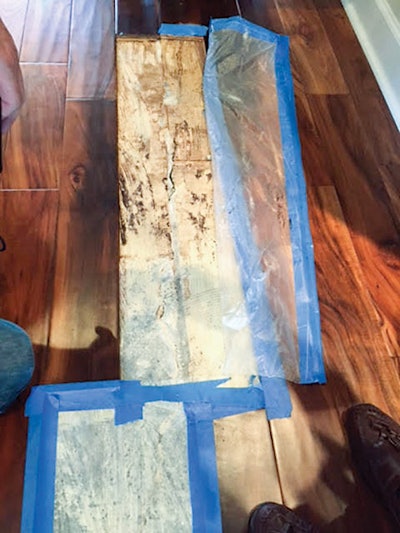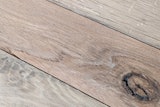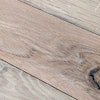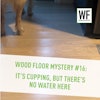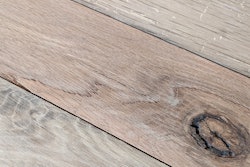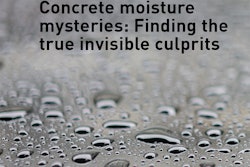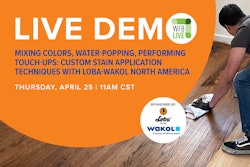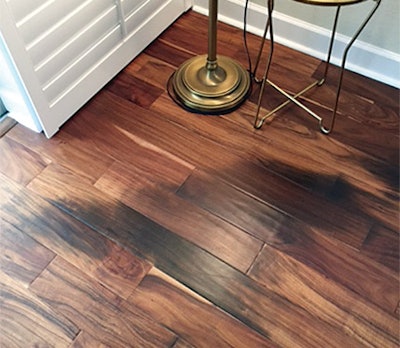
The Problem
I was called to attend a job-site review with lawyers, insurance agents, contractors and the consumer about discolored planks.
What Happened
The project was a renovation of a single-family home with 3,000 square feet of engineered wood flooring that had been glued directly to the concrete substrate. The engineered flooring was a seven-ply product with a top layer that was 1⁄8 inch thick.
The flooring had been installed in 2013 and now was experiencing discoloration of the planks in sporadic locations throughout the installation. There was no pattern to the locations where the discoloration was appearing.
The Inspection
I was commissioned by the flooring contractor's insurance company. The scope of my inspection was limited to only a visual review, with no destruction testing or questioning of the consumer allowed.
Visually observing the planks from various distances and angles, I saw the dark color on the wood's surface. I began to suspect moisture intrusion from the concrete slab, and a pin meter reading of 24% MC revealed elevated moisture levels in the wood.
I found two locations where someone else had already removed planks, and I asked for the planks that were removed. Then I examined the opened concrete surface, as well as the width of the plank, which was 5 inches.
A moisture meter reading of the concrete was 5.5%. I was able to examine the adhesive still bonded to the back of the planks, as well as one of the open areas that still had adhesive on the concrete surface. From the lawyers, I received the specification for the adhesive, which was a combination product for moisture control.
I determined the cause of the failing flooring was use of the wrong trowel for that product. The visual inspection of the adhesive made it clear that he had used a regular notched trowel for normal adhesive application, not the trowel made for the specialized adhesive/moisture barrier product. Without full coverage, the adhesive/moisture product could not protect the wood floor from the elevated moisture levels in the slab.
How to Fix the Floor
The existing flooring must be removed and installation must start over.
In the Future
It's imperative to use the correct trowel for every product. When using a two-in-one adhesive with moisture control, the trowel has a full-spread layer notch that will cover the concrete surface 100 percent with adhesive, plus a notch that creates ridges.
More photos:
